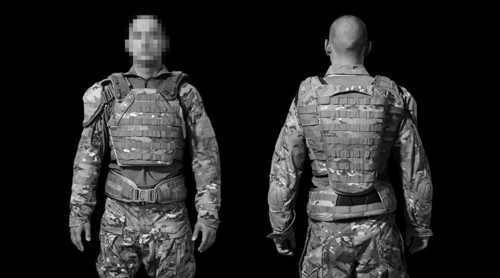Body Armor basics

TRAIN AS YOU FIGHT
Body Armor Basics.
In a combat situation knowing your gear and knowing how to utilize that gear to its max potential can mean the difference between life and death.
Basics of Body Armor
Knowing the limits – body armor comes in a plethora of ratings, but the N.I.J. (National Institute of Justice) test body armor and place it on a rating scale that ranges from II, IIIA, III and IV. this is the industry standard and is also used in England. Both the English and American institutes that test body armor are considered “ideal” and so the rating system is used throughout the world.
Soft Armor – Kevlar level II- this will protect you from 9mm 124 grain FMJ all the way through .357 magnum 158 grain SJSP level IIIA- this will protect you from 9mm 124 grain FMJ- .44Mag 240 grain SWC GC
Hard Armor – Steel or Ceramic level III- this will protect you from 148 grain 7.62x51mm NATO Ball level IV-this will protect you from 166 grain .30-06 M2 AP (Armor Piercing)
In knowing the limits of your body armor you must know that it is not a catch all. most plates are typically 10 inches by 12 inches, that leaves a whole lot you “you” exposed to enemy fire. Always remember that gear is not to make up for lack of training but to supplement the training you already have.
Using Body Armor: Body armor is heavy, bulky, hot and cumbersome, as many of my L.E. and Military friends already know. The time to start using it is not the day of needing it, when it comes down to it you need this to be a second skin, you need to be able to run, jump crawl and climb in it. Doing any of this normally will gas most of us right now. Most people I know that have body armor, have it in a plate carrier, stored in the closet. They haven’t touched it in the last few months but to show off to a few friends. While I’m glad they have it if the need arises (and I do believe it will), when push comes to shove, I hope they are up to the physical demands that it takes to save there own life if the situation comes a knocking.
All I’m trying to stress is after you make the investment of purchasing the body armor, also make the investment in your health by being physically fit and capable of wearing said armor. REMEMBER, it’s maximum potential is based on YOUR maximum potential!
What armor is right for you?
What type of body armor is right for you? I’ve been asked this quite a bit in the last few years and my answer is always the same, “how much weight are you willing to carry?”. I myself am more partial to the steel plates by Infidel Body Armor. Yes they are heavier than ceramic plates, but they are also thinner and allow you a much more natural bio mechanic movement when walking, crawling- and running. This is because the weight is closer to your center mass, it gives you a slimmer profile, which makes it easier to drive with a full combat load out.
In conclusion, it is my belief that body armor should never be sacrificed unless in the most dire of circumstances. Where mobility and maneuverability are absolutely imperative to you keeping you alive whilst on mission.
